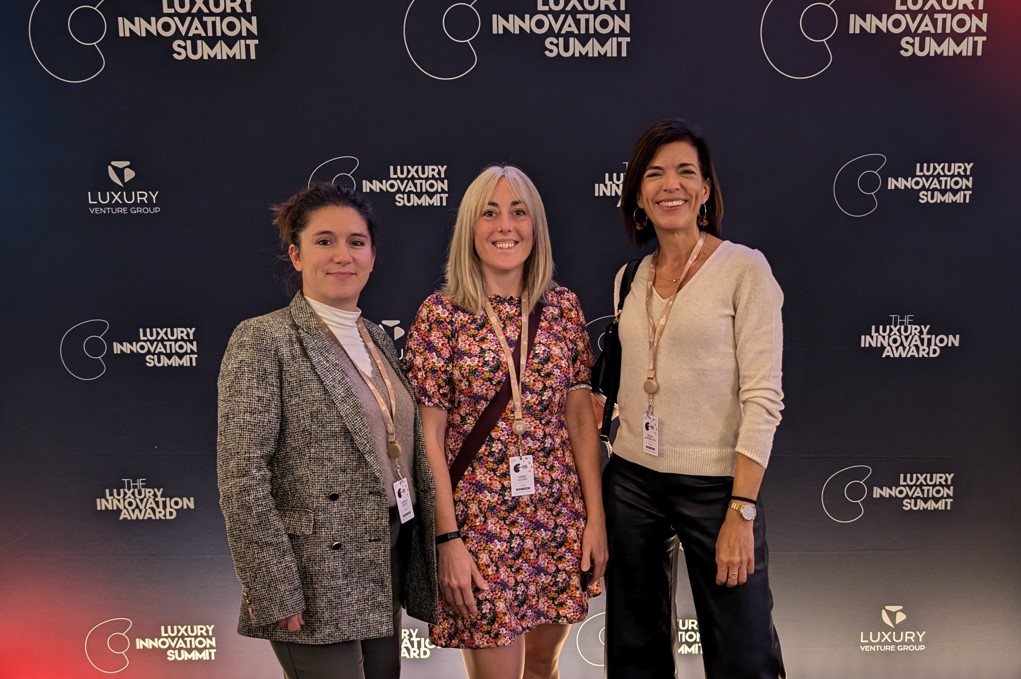At Hyphen we’ve been delivering airport retail experiences for more than a decade, in more than 30 international airports across Europe, Africa and Asia. One of the most iconic locations for us is Paris’ Charles De Gaulle, one of the largest and busiest airports in Europe.
Charles De Gaulle (CDG) is the gateway to Paris and metropolitan France, offering comprehensive retail experiences. CDG is also famous for its innovative architecture, and it has been a privilege to work within its spaces, supporting well-known international clients in delivering exceptional brand experiences.
Since 2017, our team in Paris has been collaborating with Société de Distribution Aéroportuaire (SDA), to manage the many boutique retail spaces within Paris’ airports. The most recent phase of our collaboration with SDA has been to deliver a series of luxury retail stores in a new building junction within CDG’s Terminal 1. After several years of closure, the reopening of Terminal 1 was a significant milestone for CDG and a large-scale project that required a lot of careful coordination and organisation.
Christian Dubusc, Marie Mathey, and Julie Melin explain more…
Christian Dubusc, senior interior designer, says, “The development of projects for the new building junction started in 2019. We act as the liaison between the many different stakeholders involved in the project, to harmonise the process. We were responsible for architectural project management, from the permit applications to the opening, including design review, tender package, worksite monitoring, and handover assistance.”
Working collaboratively towards a shared goal
“We’ve been collaborating effectively with SDA and our consultant partners at GAMA Ingenierie (engineering) and Concept & Structure for more than a decade, says Christian. “We are trusted for our commitment and agility, as architects, to help manifest the client’s vision.”
Marie Mathey, interior designer, says, “Collaboration and agility are crucial. The nature of these projects demands constant adaptation to changing requirements, unforeseen obstacles, and evolving circumstances. Collaborating effectively with team members, stakeholders, and clients is essential for success.
Collaboration and agility are crucial. The nature of these projects demands constant adaptation to the evolving circumstances. Collaborating effectively is essential for success.
Marie Mathey, interior designer
“Being open to new ideas, adjusting timelines and strategies, and embracing change has allowed us to adapt swiftly when needed. It has enabled us to remain agile and responsive, ensuring that the projects stayed on track despite unexpected twists and turns. What I enjoy most about these projects is the opportunity to see everyone work together towards a common goal: the construction of an entirely new building, with a lot of luxury stores.”
Overcoming challenges
Christian says, “Due to the airport location, there is a lot to consider. We are working in spaces with high traffic – airport staff alone account for more than 90,000 people. In addition, we work in the transit zone, which means we must pass through security to access the site, as you would if you were boarding a flight.”
“Each practice needs activity authorisation, and each person needs to have an access badge to go to the site, which must be worn and visible at all times”, says Marie. “We also need to do safety training and an exam before going on site. We had to be very well organised, planning carefully before each site visit, and this is essential in our role as architectural project managers.”
Enhancing the visitor experience
The team also worked on a central walkthrough area for Extime Duty Free Paris (1320 sqm), where more than 40 cosmetic corners of luxury brands were installed, as well as two stores: one selling tobacco, food, and drink (850 sqm) and one for last-minute purchases (140 sqm).
Marie says, “One of the unique design features we are especially proud of is the installation of canopies on the central walk-through area which were suspended to the structural pillars of the building, where the brand signage was installed.”
Julie Melin, architectural assistant, says “The major element that stands out to me from this project is the harmonious relationship created between the existing architecture of the airport, which is massive, simple, and clean, and the finesse of the interior spaces. Whether it’s the branded corners, rest areas, or duty-free shops, the attention to detail, play of light, and ornamental aspects of the Terminal 1 spaces offer a true experience for the users in this transitional airport space.
“The construction site monitoring is what I enjoyed most about this project. I had the opportunity to meet different tradespeople and understand how varied the role of the architectural project manager is, including the coordination among stakeholders and to follow the project’s progress in all aspects until its completion. I was able to actively participate in this by writing site meeting reports and snagging lists at the end of the project, which has been a valuable learning experience for me as a junior.”
On site learning opportunities
Julie continues, “These sorts of projects teach a lot in terms of technical, organisational, and regulatory aspects. As an airport is a highly regulated environment, I’m also expanding my knowledge in terms of fire safety standards and accessibility, among many other things.
“I have also gained new skills and proficiency in construction site monitoring software, which I can apply in future projects.
“Furthermore, being involved in the construction process on-site allows me to better understand the technical aspects of construction and the architectural challenges in the retail sector.”


